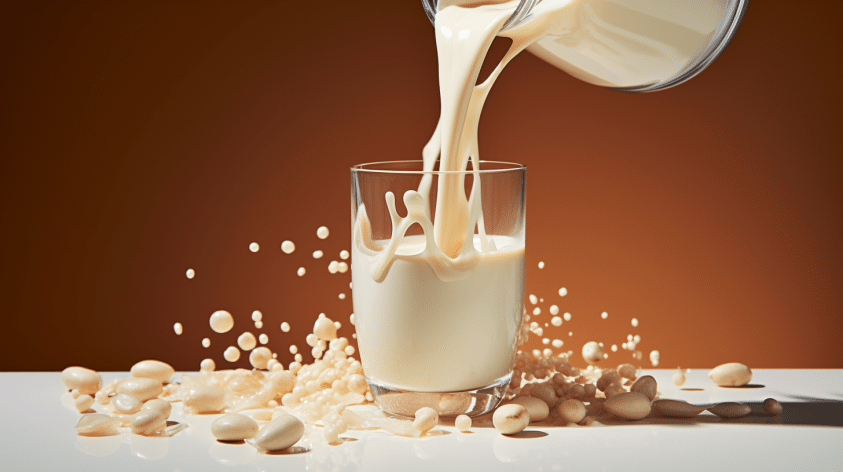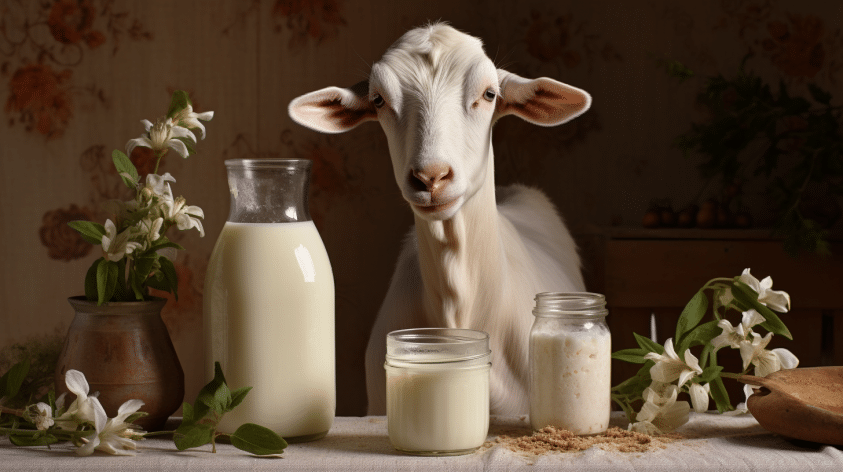Plant-based milk alternatives like almond, oat, rice, and soy milk are growing in popularity.
But how do these plant milks compare to cow’s and goat’s milk in terms of nutrition?
A new study investigated the protein, fat, carbohydrate, and mineral composition of various plant-based beverages (PBBs) and animal milk to find out.
Key Facts:
- Cow’s and goat’s milk had more total protein, essential amino acids, calcium, phosphorus, potassium, and iodine compared to plant milks.
- Soy milk was the only plant milk that came close to cow’s/goat’s milk in protein content and quality.
- Coconut milk had a similar fat composition to cow’s/goat’s milk but lower protein.
- Almond, oat, rice, and coconut milks were similar in nutrition but lower than soy.
- Plant milks were higher in sugar and carbohydrates but lower in saturated fat than cow’s/goat’s milk.
- Fortification is needed to improve mineral content in plant milks.
Source: NPJ Sci Food 2023 Sep 16
The Scoop on Plant and Animal Milk Nutrition
Plant-based milk alternatives like soy, almond, oat, rice, and coconut have become increasingly popular.
Some people choose plant milks due to lactose intolerance, milk allergies, or for ethical reasons.
Marketing of plant milks also touts their benefits – they are often lower in saturated fat and calories than cow’s milk.
But when it comes to nutrition, how do these plant-based beverages (PBBs) stack up against traditional dairy milk from cows and goats?
Scientists decided to analyze the nutrient composition of cow, goat, soy, almond, coconut, rice, and oat milk products sold in stores to find out.
Protein Power – Cow’s and Goat’s Milk Pack More Punch
Protein quality and content is important, especially getting adequate essential amino acids from diet.
The researchers found that cow’s and goat’s milk had the highest amounts of total protein at 3.4-3.7% of volume, versus 0.2-3.5% in plant milks.
Cow/goat milk also had more of every essential amino acid compared to plant milks, except soy which had higher phenylalanine.
The only plant milk with comparable protein to cow’s/goat’s was soy milk, with 3.5% protein.
However, the protein in soy may be less bioavailable than cow/goat milk protein based on digestive absorption scores.
Almond, oat, rice, and coconut milks trailed far behind in protein content.
Bottom line: Cow/goat milk delivers more total and essential protein than plant alternatives, with soy as the sole plant exception.
Fatty Acid Face-Off – Saturated vs. Unsaturated
While cow’s/goat’s milk had higher fat overall than plant milks, the types of fats diverged – cow/goat milk was around 70% saturated fat versus 10-20% in plant milks.

Instead, plant milks were rich in the healthier unsaturated fats, especially polyunsaturated fatty acids. Soy milk was highest, followed by oat and almond.
Coconut milk was the exception with 90% saturated fat from medium chain triglycerides.
But unlike the long chain saturated fats in animal milk, these medium chain fats may be processed differently in the body.
Overall, plant milks provided more heart healthy unsaturated fats. But coconut milk with its saturated fat profile more closely resembled the lipid content of cow’s/goat’s milk.
Carb Comparison – Plants Push More Carbs and Sugars
Although dairy milk contains the milk sugar lactose, this carbohydrate content was relatively low compared to the plant milk alternatives.
Rice milk had the most carbs at 12.6% volume, followed by oat and almond around 8%.
The added sugars like fructose and glucose were also higher in the plant milks versus animal milk.
These extra carbohydrates and sugars make the plant options less optimal for diabetes control or low carb diets.
Stick with unsweetened and low carb milk varieties if this is a concern.
Mineral Madness – Milk’s the Winner for Calcium and More
Milk is well known as a great source of calcium and other minerals important for bone health.
The data showed that cow’s and goat’s milk contained significantly higher amounts of calcium, phosphorus, potassium, and iodine compared to plant alternatives.
Although soy milk was highest in minerals among the plant milks, it still trailed far behind cow/goat milk in calcium with only 260 mg/L versus 1000-1067 mg/L.
Rice milk was especially deficient in minerals.
Due to their low mineral levels, plant milks would need to be fortified to achieve calcium and other mineral equivalence to cow’s/goat’s milk.
The Soy Exception
While soy stood out as the only plant milk with comparable protein to dairy milk, it was still edged out by cow/goat in essential amino acids and minerals.
However, soy remains one of the more nutritious plant-based options.
For consumers avoiding soy due to allergies or other concerns, other plant milks are similar in nutrition but fall short of dairy milk’s protein, calcium, and other benefits.
Final takeaways: Milks compared
More research is still needed, but based on this comparative analysis:
- Cow’s and goat’s milk deliver more high-quality protein, essential amino acids, and important minerals like calcium, phosphorus, and potassium than plant-based milk alternatives.
- Soy milk comes the closest to cow’s/goat’s milk in nutrition, but still lags in protein quality and minerals.
- Besides soy, other plant milks like almond, oat, rice, and coconut are fairly similar in nutrition, but trail cow/goat and even soy milk in protein, essential amino acids, minerals, and overall nutritional value.
- Plant milks provide benefits like healthy unsaturated fats and lower saturated fat, but also contain more carbohydrates and sugar than dairy milk.
- Fortification can help improve the mineral content of plant milks, but bioavailability may differ from the forms in cow/goat milk.
The choice between animal versus plant-based milk is multifactorial – nutrition is one piece of the puzzle.
But for nutritional equivalence to dairy milk, plant alternatives still have some catching up to do.
References
- Study: How animal milk and plant-based alternatives diverge
- Authors: S.S. Moore et al. (2023)







